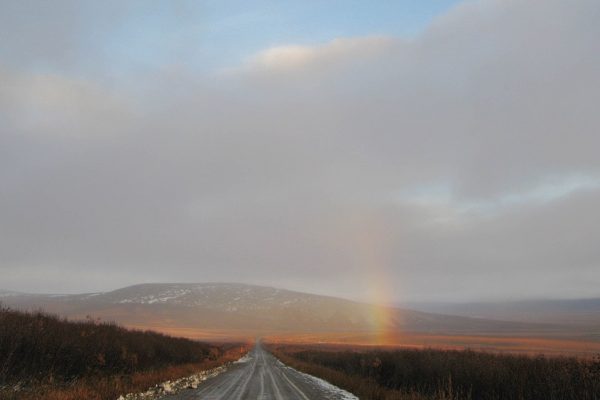
Weather records in Nome continue to fall. The latest was the Goldrush City’s amount of daily rainfall, which was set 1.27 inches of rain on Sept. 14
Rick Thoman, a climate specialist with Alaska Center for Climate Assessment and Policy (ACCAP) says this record comes on the heels of a rainy April, but an abnormally dry June and July in the Nome area.
“Given the lack of rain in the second half of summer, this was a good soaking. An inch and a quarter at the Nome airport, inland from Nome up at Dexter and Banner Creek, over 2 inches of rain,” he said.
According to Thoman, the rest of the Bering Strait region has gotten generally a half-inch or more this week.
The National Weather Service office in Fairbanks issued an elevated surf advisory on Tuesday and Wednesday for the region. Water levels were expected to rise up to 3 feet above the normal tide line in some areas, although no communities have reported water damage at this time.
And more moisture could be in Western Alaska’s future as NOAA’s Climate Prediction Center says a La Niña pattern has developed in the Pacific Ocean.
A La Niña historically has brought colder winters and cooler-than-average sea surface temperatures to the region. However, Thoman says that’s only one piece of the puzzle.
“It’s probably likely early winter will tilt towards warm[er temperatures] because of that warm ocean and later sea ice formation. Later in the winter though, there’s at least potential for some cooler weather. And if that sounds familiar, that’s almost exactly what happened last winter [in Western Alaska] and of course, we didn’t have a La Niña last winter.
As Thoman puts it, we’ll just have to wait and see how warmer ocean temperatures and the later formation of sea ice factors into the upcoming winter for the Bering Strait region.
Davis Hovey is a news reporter at KNOM - Nome.
Hovey was born and raised in Virginia. He spent most of his childhood in Greene County 20 minutes outside of Charlottesville where University of Virginia is located.
Hovis was drawn in by the opportunity to work for a radio station in a remote, unique place like Nome Alaska. Hovis went to Syracuse University, where he graduated with a Bachelor’s of Science in Broadcast Digital Journalism.




